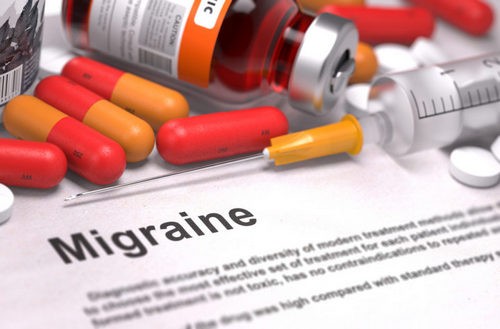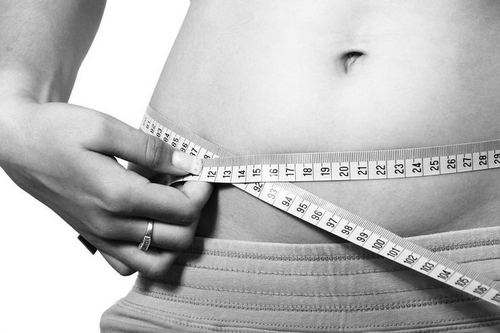The diagnosis of migraine is based on the characteristics of a headache. These pains last from 4 to 72 hours and correspond to the following parameters: medium or high intensity, more often one-sided and throbbing, limit physical activity (inclines, walking up stairs and other actions increase pain).
It is not necessary that all the signs are present – two are enough to make a diagnosis.
For example, a migraine can be bilateral, but it is quite strong and pulsating. There must be at least one of the accompanying headache symptoms: nausea and / or discomfort from light or sound.
Myth 1: migraine is any headache.
The concepts of “headache” and “migraine” are not synonymous. Migraine is just one of the diagnoses included in the International Classification of Headaches. There are about 200 of them. They are divided into two large groups: primary (headache – an independent disease) and secondary (headache – a symptom of another disease, such as sinusitis, intracranial hemorrhage, brain tumor).
There are many names for secondary headaches, but statistically, as neurologist Kirill Skorobogatykh says, primary ones are more common: 90% versus 10%. The group of primary pains includes about 20 conditions, but in 99% of cases there are only two: migraine and tension headache. Saying “migraine”, doctors mean not only the attacks of a headache, but also the person’s tendency to occur.

We evaluate the strength of pain on a 10-point scale : 0 points – no pain, 10 – the most severe pain in your life (not necessarily a headache). Patients usually rate migraine attacks at 7-8 points, in severe cases when you have to call an ambulance, it can go up to 10. Moreover, migraine is not the most severe headache from existing ones – the pain in the brain hemorrhage is much more intense, it rises to a peak for a short time and is called thunderous.
Myth 2: migraine is due to problems with the vessels or neck
In the understanding of the layman, this explanation makes sense: during an attack it seems that the head is literally bursting from the inside, theories about the violation of the venous outflow of blood from the brain or the compression of a nerve or artery in the neck look logical. Physicians proceeded from the same assumptions, starting to study migraine. But now I managed to understand that these attacks are caused by other reasons.
Any pain in the area of the head (for example, toothache or that that occurs when you touch the face skin with a needle) is the result of irritation of the ends of the trigeminal nerve. On it, a signal of pain enters its core. From there, to the gray matter, which helps a person realize that he is in pain. With migraine, the opposite is true: first, trigeminal nucleus activation occurs. A person experiences pain, although there is no source.
Why does the core become active? A person with a migraine has genetic prerequisites for this – we have not yet identified this gene, but we know that migraines are inherited, especially along the female line. This trigeminal system is very susceptible to provocateurs (emotional stress, hunger, the beginning of the menstrual cycle in women) and can at any time increase its activity and begin to generate pain.
Vessels and their pathology extremely rarely cause a headache: the brain is deprived of pain receptors and is physically unable to hurt. I give patients an example: there are neurosurgical operations on the brain when a tumor that is close to the speech area is removed. And in order to save a person’s speech, they wake him up during the operation and ask him to talk. He does not feel pain. Often he does not feel it even in an ischemic stroke – a violation of the blood supply to the brain.
There are pains caused by vascular damage: aneurysms, arteriovenous malformation, artery dissection due to trauma. But these are emergency conditions that require immediate medical attention, and not a monotonous headache that has been bothering for decades.
About the neck: various kinds of hernias and protrusions do not lead to migraines and are often found in healthy people. However, there is another type of headache associated with the neck – cervicogenic : pain always occurs when exposed to the cervical spine. If there are any changes in his upper joints (1-3) (arthritis, subluxation, etc.), a person may feel reflected pain in the crown of the head or forehead. Then, with certain movements of the neck (right – left, back) or when pressed in the projection of these joints, a headache always occurs. That is why it is easy to identify it even with a simple inspection.

I add that sometimes neck pain is accompanied by migraines. Very often, before an attack, a person “lays his neck”: he wants to stretch it, he feels discomfort. And after a few hours he begins to have a headache. Why is this happening? The core of the trigeminal nerve drops very low, to the second and even third cervical segment. It also contacts nerve cells – they are responsible for the movements of the muscles that are in the upper cervical region. That is why, during a migraine attack, the nucleus is activated and causes the same muscle tension. So this discomfort is a consequence of migraine, and not its cause.
Myth 3: migraines require a thorough diagnosis.
Most often, patients suffering from migraine come to a neurologist with a huge research folder: annual MRI, ultrasound of the vessels of the neck, EEG and REG. And they all have no diagnostic value. We have already found out that the diagnosis of migraine is not associated with the neck and blood vessels and is made according to certain complaints of the patient. The search for additional reasons only leads to overdiagnosis.
When patients come to see us, the first thing we do is try to suspect a secondary headache.
For this, we have “ red flags” :
- The first flag is thunderous and very intense pain. This is a formidable symptom of intracranial hemorrhage.
- The second – if headaches first appeared after 50 years.
- Third – if headaches dramatically changed their character.
- Fourth – if headaches provoke coughing, sneezing, straining, a change in body position.
- Fifth – if the neurologist at the reception finds focal neurological symptoms (increased or decreased reflexes, impaired eye movements, and the like).
When there are no “red flags”, but there are complaints typical of migraine, I do not see the point in a further examination. On MRI, minor changes are often found, which are considered a variant of the norm. EEG is needed only for the diagnosis of epilepsy. An ultrasound of the neck vessels is important if a person has a risk of developing atherosclerosis. Another useless study is REG, which was invented in the 60s of the last century.
It supposedly shows blood vessels and often describes a violation of the venous outflow, but this is complete nonsense. After these studies, patients often come with a diagnosis of vegetovascular dystonia (if the patient is not yet 40 years old) or discirculatory encephalopathy (if he is over 40) – pseudodiagnoses that exist only in the post-Soviet space.
Myth 4: migraine is just a headache
During an attack, the patient is worried not only about pain, but also nausea, vomiting, light and sound fear. And some people begin to feel the onset of an attack several hours or even days before it begins.
About a quarter of patients have a so-called migraine aura. These are transient neurological disorders that often occur before the onset of a headache, but can accompany it. Most often, visual disturbances. For example, on the one hand, a person has a feeling of turbidity in front of his eyes, the focus gradually grows, a rainbow crown appears around him, then all these symptoms completely disappear and a headache begins. Such “special effects” usually last from 5 to 60 minutes. There are also sensitive symptoms: there is numbness in the area of the brush, then it spreads to the forearm, shoulder, face, tongue, and then also completely disappears. Some describe speech disorders – aphasia, when it is difficult to find a word.
What is the essence of an aura? The cerebral cortex is strictly divided into certain zones: the back of the head – vision, the temple – speech, hearing, closer to the frontal part – the sensory and motor zones. A wave of electrical excitation arises in neurons, which is replaced by a period of silence, inhibition of electrical activity. And this wave travels through the cells, usually from the back of the head to the forehead. And passing through the cerebral cortex, they cause the same symptoms.

There is also a prodromal period of migraine. A person may experience non-specific symptoms several hours or even several days before the onset of the headache phase. For example, frequent yawning, drowsiness, eating disorder (you want sweets or stirs up with any food), a feeling of fluid retention, or rapid urination. All this precedes the phase of a headache. During this period, changes in the activity of the hypothalamus are visible on MRI: there is an assumption that it generates a migraine attack. There is also a postdromal period (up to 48 hours), when the head no longer hurts, but the person is broken, drowsy and feels unhealthy.
Myth 5: migraine can be cured
Unfortunately not. This became clear when her cause came to light. But medicine has learned to stop attacks, prevent them and every year succeeds in this more and more.
There are two principles for treating migraines: relieving seizures and preventing them . To stop attacks, you can use different drugs, including conventional painkillers: paracetamol in an adequate dose (1 gram) and ordinary ibuprofen (400 or 600 milligrams). Efficiency criterion: the pain disappears within two hours and does not return within two days. If painkillers do not work, special medications are prescribed – triptans.
They act on serotonin receptors of certain subtypes: 1B and 1D. Triptans block the production of CGRP (calcitonin gene-related peptide). This is a neurotransmitter that transmits information about pain in the trigeminal system. Triptans have a side effect – they constrict blood vessels. Therefore, they can not be used by those who have suffered a heart attack or stroke. Now they are testing new drugs – dithans, which act on serotonin receptors of subtype 1F (they are in the trigeminal system, but are absent on the vessels). Such drugs can relieve pain without a vasoconstrictive effect.
The approach to stopping attacks is rational when they are rare (not more than four per month), are not accompanied by a complete disability. Excessive intake of any pain medication for migraine or headache stress can lead to another type of headache – drug-induced (when the head hurts from the pain medication itself). To prevent this from happening, we prescribe preventive therapy to the patient .
Her goal is to make seizures more rare. For this, in particular, drugs from the group of beta-blockers, antidepressants, antiepileptic drugs and even Botox are used. Judging by the results of international studies, they are effective, but the mechanism of their action has not been fully understood. Now there is a revolution: there are drugs that block CGRP, in the form of injections, which must be used once a month or even once a quarter. They were registered this year in the USA. While they are expensive – the price of one injection reaches $ 600. But they can significantly change the approach to treating migraines.

In addition, we teach patients non-drug prevention methods. We are trying to find migraine triggers together: hunger, certain foods, lack of or excess sleep, stress. We recommend regular exercise, yoga and the like. But such methods work only in conjunction with drug therapy.
Myth 6: Men do not have migraines.
Here we say briefly: it happens, though less often. The ratio of men and women with such a diagnosis is approximately one in three. Moreover, in boys up to puberty, migraine is more common than in girls.
Myth 7: people who miss work because of a migraine simply pretend
In Russia, about 20% of the working-age population suffers from migraines. Since it is impossible to arrange sick leave for each attack, with a severe attack, people, as a rule, remain at home and take a day off at their own expense. Not every boss is ready to tolerate this, so many choose a different path: take pills and come to work. However, the employee’s work efficiency with a migraine attack is almost zero.
A migraine attack greatly affects a person’s cognitive abilities. Sometimes so much so that a person’s ability to perceive information is reduced to the level of a patient with Alzheimer’s disease.

There is a WHO rating of The Global Burden of Disease Study, which evaluates, among other parameters, which diseases most often cause disability in the population. Diseases are arranged by the number of years that a person lives with disability.
Migraine here is in sixth place (for women in third). This is a very expensive disease. In Europe, the economy is losing 111 billion euros annually from migraines . These are missed working days, and those when a person came to work, but can’t fulfill his duties due to pain.



